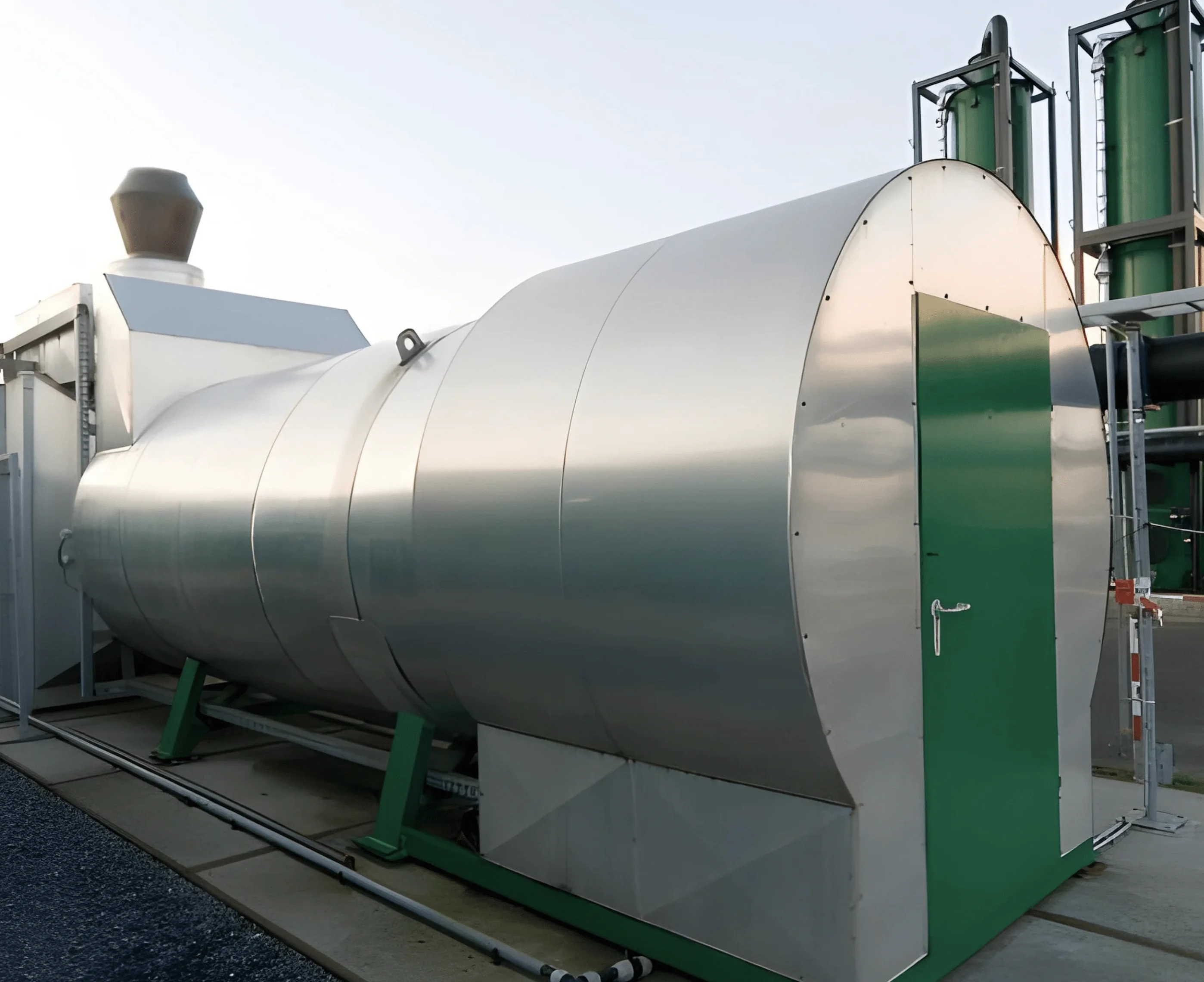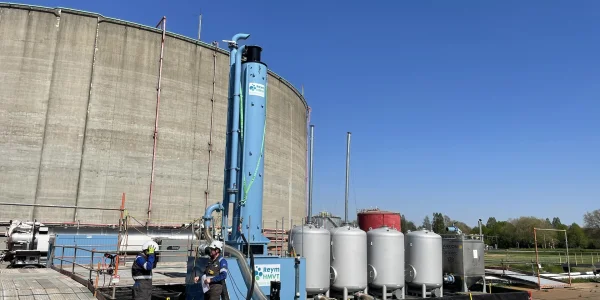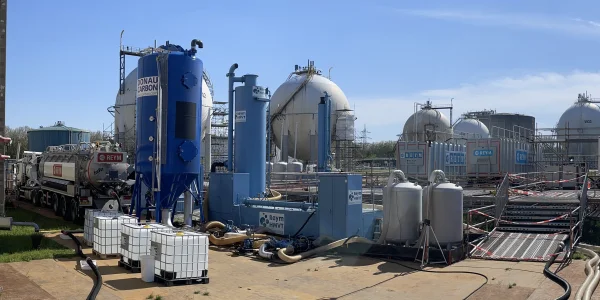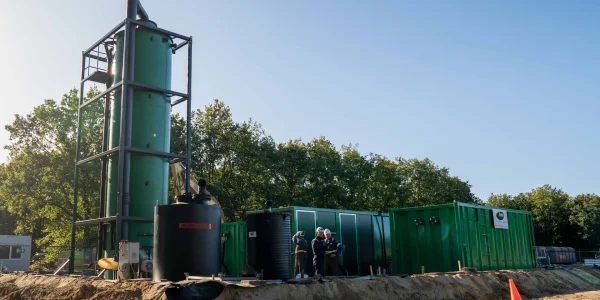Air Treatment
Oxidation of Vapors
Sections

At HMVT, we understand the complexity and importance of effective air purification techniques. For vapors with high contaminant loads, we use oxidative methods. These methods include two main techniques: classic thermal oxidation and catalytic oxidation.
Classic Thermal Oxidation
This traditional form of oxidation occurs at high temperatures, where combustion can range from a flare system to a closed combustion unit. In such systems, combustion is carried out in a specific combustion chamber. An important aspect of this technique is the potential for optimizing energy consumption. This is achieved through the implementation of heat exchangers and/or regenerative combustion chambers, contributing to a more efficient process.
Catalytic Oxidation
In catalytic oxidation (CatOx), vapors are oxidized at a lower temperature using a catalytic material. This method requires less support fuel and can often be operated autothermally, meaning the process sustains itself without external heat sources. The major advantage of this technique is its potential to remove contaminants almost completely.
Key Considerations for Oxidation Processes
While oxidation processes can be very effective, it is crucial to take specific operational parameters into account. These processes function optimally within a certain range of influent concentrations to ensure autothermal operation. At too low concentrations, additional support fuel is needed; at too high concentrations, there is a risk of explosive mixtures.
In the presence of chlorinated hydrocarbons, extra caution is required to prevent the formation of dioxins. With classic oxidation, rapid cooling of the vapors is essential to avoid dioxin formation. Catalytic oxidation does not pose this risk, provided that concentrations of chlorinated hydrocarbons are properly managed.
Another important aspect is avoiding catalyst poisons in the vapor stream, which can impact the effectiveness of the catalytic oxidation process.
Innovation in Air Purification: Cold Plasma Technology
In collaboration with Eindhoven University of Technology, HMVT developed a groundbreaking demonstration air purification unit a few years ago, based on pulsed cold plasma technology. This innovative approach is suitable for treating a wide range of vapors, from fine particulates to hydrocarbons and sulfur compounds. Cold plasma technology offers a promising path toward more efficient and environmentally friendly air purification methods.
At HMVT, we are committed to developing and implementing advanced technologies for air purification. Our goal is to contribute to a more sustainable world by minimizing the environmental impact of industrial processes.



